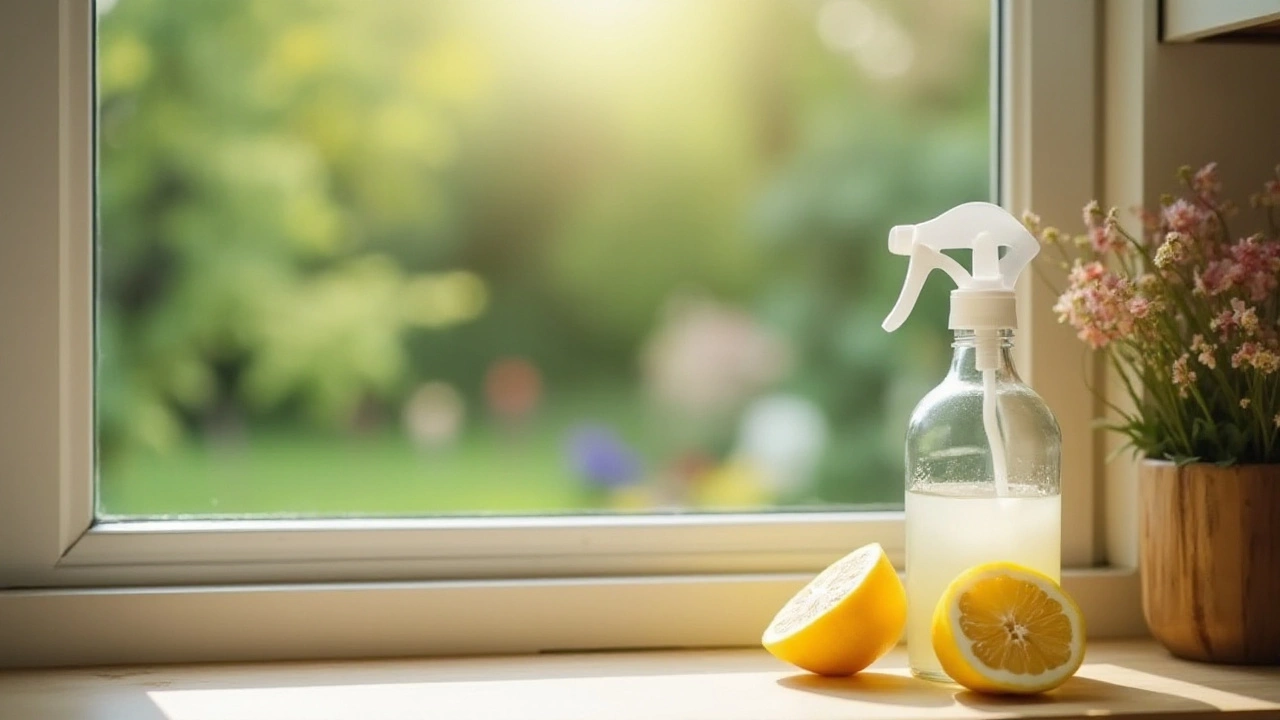DIY Cleaning Solutions: Real‑World Hacks for Every Room
Ever looked at a stubborn stain and wished you had a magic potion at hand? You don’t need pricey chemicals – most of the power lives in your kitchen. Below are the go‑to ingredients, why they work, and exact recipes you can start using today.
Everyday Ingredients That Actually Work
Baking soda is a mild abrasive and a natural deodoriser. Sprinkle it on carpets, let it sit for 15 minutes, then vacuum – you’ll see dust and odors disappear. When mixed with a bit of water, it turns into a gentle scrubbing paste that’s safe on ovens, tiles, and even mattress surfaces.
White vinegar is acidic enough to cut grease but gentle on most finishes. A 1:1 mix with water tackles glass oven doors, window streaks, and bathroom limescale. Never use undiluted vinegar on marble or natural stone – it can etch the surface.
Lemon juice adds a fresh scent and extra acid power. It’s perfect for brightening dull stainless steel or removing rust spots from tools. Just squeeze, spray, and wipe.
Hydrogen peroxide (3%) works as a mild bleach. Use it on mouldy bathroom tiles or to lift set‑in stains from white fabrics. Combine it with baking soda for a fizzing action that lifts grime without harsh chemicals.
Enzymatic cleaners break down organic stains like urine, blood, or food residue. They’re especially useful for mattresses and pet accidents because they actually digest the odor‑causing proteins instead of just masking them.
DIY Recipes for Common Problems
1. Oven Door Glass Cleaner
Mix 2 tbsp baking soda, 1 cup warm water, and a splash of vinegar. Apply with a soft cloth, let sit 10 minutes, then wipe clean. The mild abrasive lifts baked‑on grease while the vinegar dissolves residue.
2. Mattress Odour Neutraliser
Sprinkle a thin layer of baking soda over the entire mattress, let it rest for at least an hour (overnight is best), then vacuum. For stronger smells, add a few drops of essential oil to the baking soda before sprinkling.
3. Streak‑Free Window Spray
Combine 1 part vinegar, 1 part water, and a tiny squirt of dish soap. Spray on the glass, wipe with a microfiber cloth in a Z‑pattern. The soap prevents streaks, while vinegar cuts grime.
4. Grease‑Busting Kitchen Cleaner
Combine ½ cup baking soda, ¼ cup hydrogen peroxide, and a few drops of lemon juice. Spread on greasy stovetop areas, let bubble for 5 minutes, then scrub with a non‑scratch pad.
5. Upholstery Spot‑Cleaner
Mix 1 cup warm water, 1 tbsp dish soap, and 1 tbsp white vinegar. Lightly dab the solution onto a stained area, blot with a clean cloth, and repeat until the spot lifts. Test on an inconspicuous spot first.
All these recipes use items you likely already have, keep costs low, and avoid harsh fumes. The key is to apply the right amount, give it time to work, and always test on a hidden spot first.
When you adopt DIY cleaning, you also reduce plastic waste and cut down on chemicals that can irritate skin or indoor air. That’s why many homeowners are switching to these simple solutions – they’re effective, safe, and budget‑friendly.
Ready to give them a try? Grab a spray bottle, a tote of baking soda, and start tackling one area at a time. You’ll be amazed at how clean your home can feel without spending a fortune on commercial products.

Crafting a DIY Window Cleaner to Sparkle Your Home
Creating a homemade window cleaner is a simple yet effective solution for maintaining sparkling, streak-free windows. With a few common household ingredients, such as vinegar and baking soda, you can craft a cleaner that not only saves money but is also eco-friendly. This do-it-yourself guide will offer tips for mixing ingredients, show you how to avoid common pitfalls, and provide insight into why these natural ingredients are highly effective. Discover the joy of achieving gleaming windows while caring for the environment.
Read More